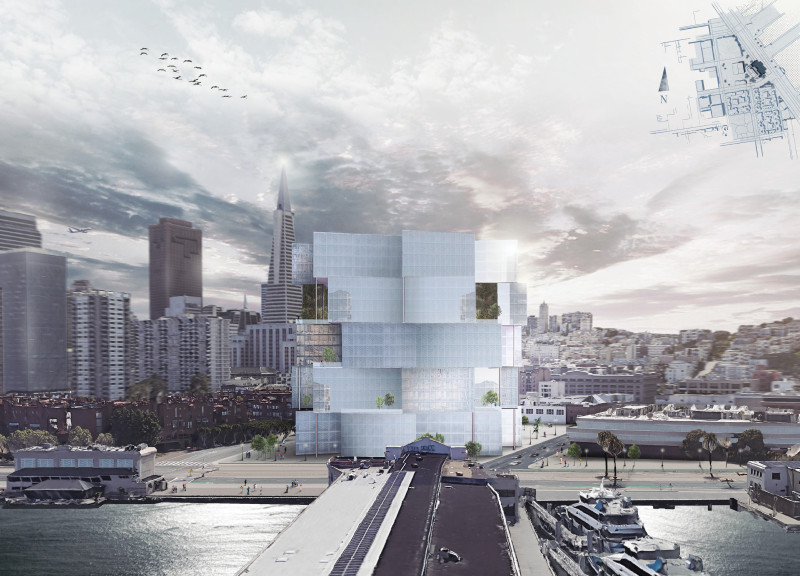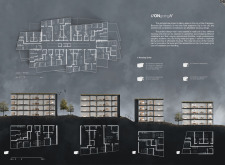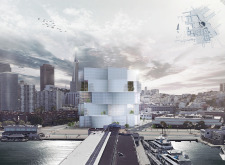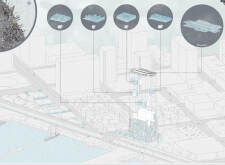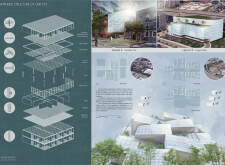5 key facts about this project
Modular Design Approach
What sets this project apart from other affordable housing developments is its modular design approach. The housing units can be pre-manufactured and assembled on site, significantly reducing construction time and costs. The four unit types comprise a mix of 3-bedroom, 2-bedroom, 1-bedroom, and studio apartments, allowing for flexible living arrangements. This adaptability is essential in addressing varying demographic demands while maximizing land use in constrained urban environments.
Moreover, the use of prefabricated materials, including steel framing and precast concrete panels, enhances the project's durability and efficiency. The integration of environmentally conscious features, such as green roofs and landscaped terraces, promotes sustainability and encourages resident interaction with nature. This innovative design philosophy ultimately seeks to create a harmonious living environment that fits within the urban context of San Francisco.
Community-Centric Layout
The architectural layout prioritizes communal spaces to foster social interaction among residents. Shared amenities, such as ground-level gardens and terraces, are strategically placed to encourage community engagement. The arrangement of housing units allows for interconnected pathways, facilitating easy access to these communal areas while enhancing safety and visibility. This design decision addresses the need for social cohesion in residential developments, creating an inviting atmosphere that encourages relationships among neighbors.
The project also considers aspects of urban transit, ensuring proximity to public transport and essential services. The emphasis on walkability not only serves the practical needs of residents but also contributes to a dynamic urban environment. This focus on community and connectivity represents a significant departure from traditional isolating housing models.
Sustainable Material Selection
In addition to its modular design and community focus, the project showcases a commitment to sustainability through its material selection. The use of resilient materials such as metal cladding and high-quality insulation contributes to the building’s energy efficiency. The application of glass elements facilitates natural lighting, creating a sense of openness within the living spaces while reducing the need for artificial lighting.
The incorporation of green roofs not only helps in insulating the building but it also creates additional green space for residents. This strategy enhances biodiversity within the urban landscape and serves as a natural buffer against air pollution, thereby improving residents' quality of life.
Overall, this affordable housing project in San Francisco emphasizes a comprehensive approach that combines modular construction, community-focused design, and sustainable materials. For a deeper understanding of the architectural plans, architectural sections, and architectural designs that inform this project, readers are encouraged to explore the project presentation in greater detail.


